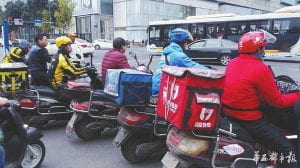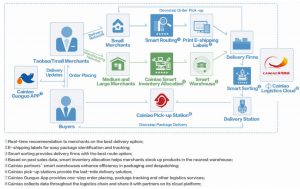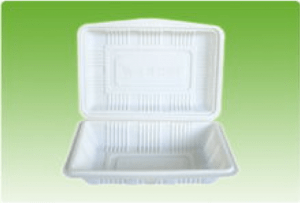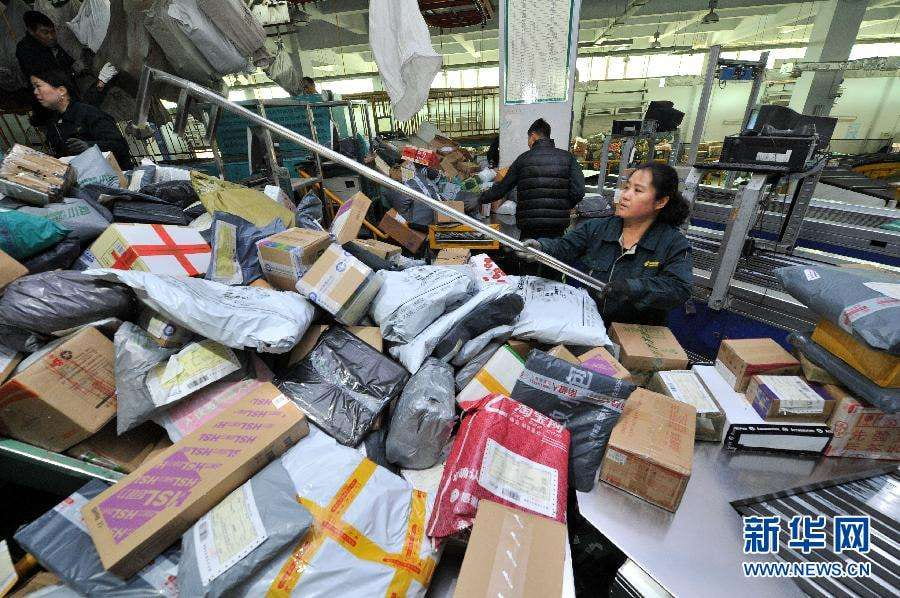We have chosen Goal 11: Sustainable cities and communities ![]() because we think it is one of the rising issues globally as living standard improves and percentage of urbanization increases. In this blog post, we are going to explore a few business models and operation concepts in China to see how these could help to promote sustainable cities and communities. We welcome any share of thoughts on how to tackle the issue in China or other ideas and situations in their countries and hopefully could inspire everyone.
because we think it is one of the rising issues globally as living standard improves and percentage of urbanization increases. In this blog post, we are going to explore a few business models and operation concepts in China to see how these could help to promote sustainable cities and communities. We welcome any share of thoughts on how to tackle the issue in China or other ideas and situations in their countries and hopefully could inspire everyone.
Quick background on Chinese delivery industry
With the booming of e-commerce companies, it has dramatically changed the shopping behaviours of Chinese customers and created greater convenience for them. With just a click on the mobile, almost any food (raw, freshly made, fruits), flowers, clothing and accessories, hardware….you name it could be delivered on in front of your door in minutes or just a few days.
In 2018, more than 50 billion packages were delivered in China. During China’s 2018 Double 11 shopping festival (November 11th, which used to celebrate the singles with shopping), almost 2 billion packages were delivered in 10 days. Packaging waste and emissions have gained more and more attention now. According to the environmental organization Greenpeace, only less than 10 per cent of packaging boxes are recycled in China. The country faced with 160,000 tonnes of packaging waste after 2017 Double 11 shopping event. The delivery trucks and vans on the road also added to the pollution problem.

Food and beverage delivery is also experiencing exponential growth over the past 5 years. According to a 2017 food delivery industry report, there are 20 million food delivery orders per day in total on the top three delivery platforms in China, which means there could be as much as 60 million one-time disposable lunch boxes in a single day, an environmental group said. About 20 million pairs of disposable one-time chopsticks are used every day in China. The increasing food delivery service contributes about 70% of the disposable one-time chopsticks consumption. Some of these materials may be biodegradable, some even it is biodegradable may not necessarily mean it does not become toxic substance, which will still ultimately affect our environment.
In facing the challenge, the Chinese government has issued green standards for sustainable packaging. Major logistics companies have also taken initiatives to tackle the delivery waste problem and promote a green environment. But what has the private sector done to ease the issue?
Cainiao Business Model
Taobao of Alibaba, unlike its competitor JD.com that owns its logistics, does not have logistics stream. Instead, its parent company Alibaba provides platform and infrastructure for its logistics partners. Cainiao is a data platform that connects more than 15 logistics companies serving the logistics chain of the e-commerce industry. It integrates existing logistics resources and provides them with data products and services.

Delivery
Collaborating with more than 15 top logistics companies in China, Cainiao has constructed a platform that processes 4.2 million packages every day or 70% of total deliveries in China. With the real-time information provided by Cainiao, the merchants on Taobao and Tmall can choose from a pool of logistics companies that can provide the most efficient delivery options. Caoniao’s smart routing and sorting services can reduce error by 40%.
By pooling up logistics resources, it increases the utilization rate of its partners. Using big data to increase smart routing accuracy, it optimizes delivery route and reduces delivery time.
Pick-up Stations
Community-based pick-up network has been set up by Cainiao for last-mile delivery. Customers can pick up their parcels in convenient stores, chain stores etc.
Warehouses
Cainiao offers smart storage capabilities in over 200 network warehouses. It’s a centralized warehouse that can be utilized by all logistics partners.
Alibaba Green Logistics 2020
Alibaba Group, along with its logistics arm Cainiao Network has initiated Alibaba Green Logistics 2020. The company aims to improve material recycling, packaging, route planning and delivery methods to work towards a greener future. It plans to use AI algorithms to make smart routing and shorten the average delivery journey by 30%. It aims to deploy new energy vehicles to 100 cities in China and minimize carbon footprint. Meanwhile, it will also promote the use of recycled packaging and biodegradable materials.
Risk of scaling up the model – While it sounds great for a platform business, Cainiao may face the risk of opposition from company to share all business data, which can be seen as proprietary or business secret by some players. We expect on the smaller players in the market, who do not have the capabilities to make huge data investment, will be willing to join the platform to enjoy the synergies. And would data privacy an issue and would this encourage Alibaba, who has Taobao, Alipay and many internet subsidiaries, to become the ultimate data giant in China?
JD.com 
One of the key issues of delivery parcel packaging was the usage of masking tapes, metal staples and glues that make the usual carton box or plastic bag contaminated and hard to recycle. In 2017, JD Logistics unveiled the Green Stream Initiative (清流计划), the largest environmental program since establishment, to promote the use of sustainable packaging materials and reduce the environmental impact of the entire supply chain. A green recyclable box is used for some of the product purchases, JD.com offers residents for free in 7 Chinese cities, including Beijing and Shanghai an option to choose reusable boxes for the goods they order.

These “green” boxes can be reused about 20 times in one life span, after washing and sanitizing, and can even be 100% recycled for a second life. The box is made of thermoplastic material, which can be easily reheated, melted and remoulded into a new box at the end of its life cycle claiming a zero burden to the environment. It can be assembled in 5 seconds with no usage of other materials, except a biodegradable one-time seal for security. JD.com has partnered with manufacturers who can custom made for small and medium-sized parcels, including jewellery, cellphones, watches, makeup and skincare products, with the exception of fresh food. According to the company representatives, the box also comes with financial benefits. It can reduce cost by 30% for each usage, and it is expected that the initiative can save RMB 32.5 million (USD 4.8 million) per year if 10% of orders use the new packaging.
JD plans to reduce the number of boxes used throughout the supply chain by 10 billion by 2020. The company has also set the target for 80% of packaging materials to be recyclable, over 50% of plastic packages to be replaced by biodegradable material, and 100% of logistics packaging to be composed of recyclable or reusable materials.
In 2019, JD.com added that more than 40,000 Stock Keeping Units (SKU meaning goods available), including honey, tissue paper, smartphones and watches, can be delivered in these boxes now — but it’s not saying what percentage of its entire SKUs this represents. (The e-commerce giant did not disclose its SKU in its latest financial statement. But before the company went public, it disclosed that there were 402 million SKU on its platform in, 2014.). The plan has covered close to 30 cities in China today.
Meanwhile, JD also introduced a fleet of hydrogen energy delivery trucks to greater Shanghai earlier this year, marking the first significant commercial deployment of hydrogen-powered vehicles for logistics in China as well as the latest expansion of JD’s goal to make the ‘last mile’ of the distribution process carbon-free, including a fleet of 50 solar-powered delivery vehicles in Beijing.
Risk of scaling up the model – A circular product does seem powerful and long expected. JD.com did not disclose any data on energy efficiency to product and remould the box, water usage to clean and chemicals that are used to sanitize the box. On the customer size, the level of convenience will decrease as customers need to keep the box until someone to collect it or return the box to a particular collection point. Some customers may decide to keep the box instead (given it is quite light and sturdy) and mean extra cost for JD.com. The success of such a model would require a certain level of environmental awareness, self-discipline and understanding in the public.
Meituan 
The development of technology allows service providers to figure out more approaches to tackle the environmental problem and provides rooms for more business innovation. Take the largest food delivery service provider Meituan(美团) as an example to check out how it sets its sustainable growth target and how it leverages business innovation to reach the goals.

Meituan launched a plan of “Green Mountain” and explores commercially, technologically and financially to solve the environmental problems caused by food delivery.
- Through business innovation, including promoting environmental friendly stores and encouraging environment criteria into service feedback cycle to close a loop
- By 2020, find out technological solutions for packaging
- Figure out better trash recycle model
- Establish a foundation to support environmental protection
Business model innovation:
Incentive sharing: Meituan leverages big data technology to promote the presence of environmentally-friendly stores. Such stores charge higher average selling prices. Promoting environment-friendly stores drives up the transaction volume of the platform. Given the same commission rate, food delivery platform also earns more profit through such an initiative.
Providing more options: Food delivery platform also provides the option of “no disposable chopsticks and packaging”, which can help reduce cost as well.
Creating loop: Adding environment matrix into the feedback part forms an enclosed loop to create awareness of environmental protection from the customers’ side. Such model emphasises on sustainability. It attracts the following 2 major groups:
- More high-end and environmental-aware customers to Meituan’s platform
- More high-end and environment-aware food providers to Meituan’s platform
In this way, Meituan’s business ecosystem is improved in terms of customer quality and store quality, which continues contributing to its revenue growth as more high-value transactions take place on Meituan’s platform. Through this way, Meituan reaches high financial impact and social impact together.
This innovation can be game-changing from 2 perspectives:
- From supply view, better food and restaurants are introduced and promoted, improving the supply side’s dynamics. At the same time, the cost can be reduced by providing more options.
- From demand view, high-quality customers are attracted to the platform due to such marketing and operation, improving demand side’s dynamics as well.
Risk of scaling up the model – Some customers are only taste and price orientated and do not care much about environment-friendliness. Meituan’s promotion and push of environmentally-friendly restaurants can affect user experiences. However, such impact can be controlled through big data. Similar cases like company Ele (饿了么), another platform, is also upgrading their technology to meet such a trend. The next steps to mitigate the risk lies in the algorithm. How to improve algorithm and find the balance between environment-friendliness and user experience.
——– Will you now think twice before making an online shopping or a food delivery order? ——–
Authored by: Wanying Chen, Tobias Gong, Chenbin Li, Alvin Cheng

This is becoming a ever increasing issue as the rates of e-commerce increase in every single area of the world. One of the main examples of how innovation can be double-fold and also negative implications. We need to think about smarter delivery patterns and processes. One of the options could be to use reusable boxes that are retrieved after delivery. From the process point of view, looking at bundling orders and deliveries by area or giving discounts to users if they wait for a couple of days so more order/deliveries are received/planned for a particular area can also be potential alternatives…
Thank you for this write-up. China’s population density and sheer scale make its businesses so interesting to read about because they are forced by circumstance to respond so quickly to change, and are great at it. I’d love to hear what kind of infrastructure is enabling JD’s hydrogen energy truck fleet in particular. Hopefully China’s innovations will be able to spread quickly to other parts of the world.
Very interesting! Each time after I order some food online and then cook at home for a simple meal, I would be so surprised by how much garbage I have generated. Overpackaging is a major issue currently in China and I really wish we all can do something about it.
It’s heartbreaking to see the damages we do to our environment and living creatures because of over usage of packaging. Measures should be taken immediately. Surely easier said than done as the delivery service industry in China is providing many jobs, but this is a topic that we cannot wait further to address!